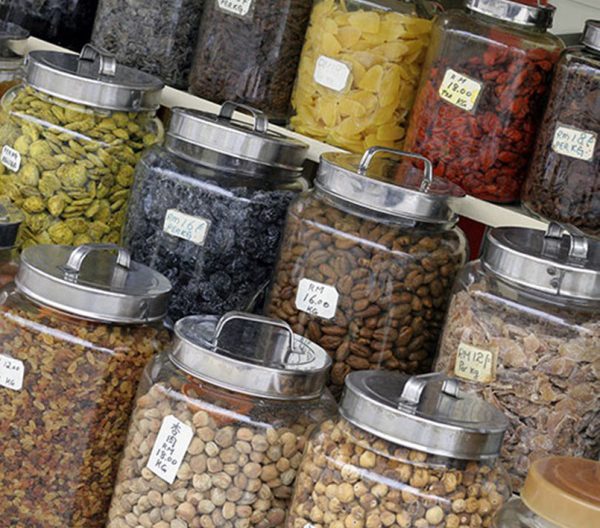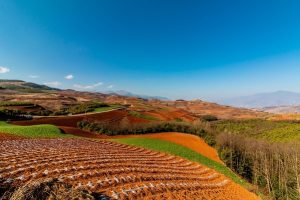
In Ethiopia, traditional medicine has a big impact on conservation and plant protection. The preservation and sustainable use of these plant species have resulted from the vast knowledge of indigenous plants and their therapeutic qualities possessed by several traditional healers.
Traditional healers are usually knowledgeable about the conditions under which these plants grow and the importance of protecting their ecosystems. They have traditionally used methods such as selective harvesting, which ensures the long-term survival of the plants and allows for plant regeneration.
In contrast to other cultures that undergo changes throughout time, traditional medicinal plants typically serve as important sources for both conventional and contemporary medicine. Roughly 118 of the top 150 prescription medications in the US are derived from natural sources. Developed nations are home to over 1300 medicinal plants, 90% of which are gathered from wild resources.
The usage of medical plants is expanding rapidly worldwide due to the rising demand for natural health products, herbal medicines, and secondary metabolites of medicinal plants. In developing countries, over 80% of people are dependent on herbal drugs for their primary healthcare.
Similarly, Ethiopia has been using medicinal plants. Due to its various sea levels, the country has various ecosystems and a high diversity of vascular plants. Ethiopia is one of the six plant-rich countries in Africa, where more than 60% of the plants are said to be indigenous, and most of them have healing potential.
Traditional medicine has a long history in Ethiopia and plays an important part in the country’s healthcare system. It is firmly ingrained in Ethiopian culture and is done by traditional healers who have passed down knowledge from generation to generation.
The healers preserve traditional medicinal plants. It is crucial for both healthcare and conservation efforts. Besides, various intuitions and concerned bodies have made various efforts to conserve traditional medicine across the country.
According to the Ethiopian Biodiversity Institute, Ethiopia has about 6027 species of plants. From these, over 2000 of the plants have been used for natural medicinal purposes, and 10% of the plants are endemic and are found and used only in Ethiopia. Studies have also indicated that over 70 % of Ethiopians depend on traditional medicines for their healthcare, and about 95% of the preparations are made from plant origin.
Particularly, traditional medicine plants are used to treat individuals who live in rural regions without access to modern drugs or healthcare. Others, in the meantime, resort to traditional medicine when contemporary healthcare facilities fail for a variety of reasons. People’s dissatisfaction with modern medicines and their lack of efficacy, especially in the cases of certain human ailments such as cancer, liver diseases, herpes zoster, eczema, swelling, and hemorrhoids, are some of the reasons why traditional healing systems were preferred over conventional medicines.
Taking these facts into consideration, the annual conference of the Traditional Medicine Professionals Association of Addis Ababa Administration, which was attended by leaders of the Ethiopian Food and Drug Authority and experts in the field, was held under the theme “Our traditional medicine for our health.”
Traditional medicines and therapies, it was suggested during the meeting, should be applied in a quality way backed by scientific research. Furthermore, they decided to protect and preserve traditional therapeutic herbs.
Addis Ababa City Administration Traditional Medicine Experts Association President Megabi Tibebu Merigeta Mengisitu Desita said that traditional medicines and treatments are better accepted and effective when they are marketed with the support of scientific research. Hence, the association is working with the concerned bodies to allow traditional healers to get legal recognition, produce the medicine using scientific methods, and enter the market through research-supported procedures.
The association has 88 full members and 28 candidate members. Accordingly, the association has been working with and supporting traditional medicine healers to get legal licenses and carry out their work properly. Traditional medicine treatments existed both in ancient times and currently. The treatment is given using a method that provides external and internal treatment by using plants and minerals in different ways. Therefore, the president conveyed the message that the treatment should be supported by scientific research by preserving and protecting traditional medicine plants.
In addition to the research activities, proper care should be given to traditional medicine plants. In particular, efforts are being made to cultivate endangered traditional medicine plants in various areas and use them for medicinal purposes, he added.
The Ethiopian Food and Drug Administration (EFDA) Drug Registration and Licensing Director Habtamu Beyene noted in his part that traditional medicines and treatments should be supported by scientific research and marketed through the legal process of drug preparation.
He also said that if traditional medicines are supported by research, their effectiveness will increase.
Accordingly, the government has put an approach in place to create a way for traditional medicines to be legally registered and marketed. There is a system that helps traditional medicines and treatments pass the legal preparation process and get permission, so those with the expertise and knowledge in the field can get the necessary services from the authority.
He further explained that the authority is conducting serious inspections that allow modern and traditional medicines to pass the legal preparation process and be used on the market. Apart from inspections of traditional medicine and supporting the association, the authority has also been working with stakeholders to preserve traditional medicine plants.
Indeed, it is critical to prioritize the conservation and preservation of traditional medicinal plants. Several traditional medicinal plant species are threatened with extinction due to a variety of circumstances. The International Union for Conservation of Nature and the World Wildlife Fund estimate that between 50,000 and 80,000 flowering plant species are utilized for therapeutic purposes worldwide. More than 15,000 of these are endangered with extinction due to overharvesting and habitat loss, and 20% of their natural resources have already been depleted due to rising human populations and plant consumption. However, this concern has been known for decades, but the rapid extinction of species and habitat damage throughout the world has raised the likelihood of medicinal plant extinction.
In Ethiopia, those plants that are used for traditional medicine purposes have faced various challenges, namely, environmental degradation, deforestation, recurrent drought, various anthropogenic activities, the expansion of urbanization, and so on. Besides, habitat destruction, overexploitation, erosion, lack of effective regulation, and so on are threatening the medicinal plants and biodiversity of the natural resources of the country, he said.
Moreover, medicinal plants are important natural resources that are affected by unplanned growth, and overexploitation of medicinal plants from non-managed natural resources has not only resulted in a shortage of various herbs but also the extinction of several species in nature.
In light of this, working on conservation areas that are eligible for conservation should involve collaboration between the government, interested parties, and international organizations. Because creating protected areas, especially to keep medicinal plants alive, can contribute to their survival. To avoid habitat degradation, these places need to be properly maintained.
Collaboration with traditional healers should be sought since they can help preserve and use therapeutic herbs. Collaboration with them can assist in bridging the gap between traditional medicine and contemporary healthcare systems, as well as ensure the long-term viability of medicinal plant resources.
BY EPHREM ANDARGACHEW
The Ethiopian Herald November 26/2023




